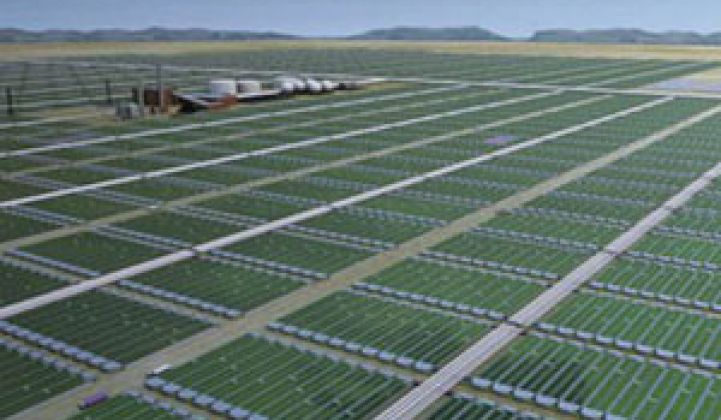Another day, another algae company.
Colorado's Solix Biofuels today announced that it has raised $10.5 million from the Southern Ute Indian Tribe, Valero Energy, a U.S.refiner often associated with Venezuela's oil industry, and Infield Capital. Solix plans to grow algae in encased bioreactors, i.e., clear tubes that let in sunlight.
Sound familiar? It should. GreenFuel Technologies pioneered this concept earlier in the decade and has been testing it in Arizona for the past few years. Since then, several companies have effectively copied the concept and rolled out plans to do the same.
Algae companies are breeding faster than algae itself, it seems. Over 50 companies have been formed in the past few years that have crafted business plans to turn pond scum into fuel and/or oil, Tim Zenk, vice president of corporate affairs for the Sapphire Energy, told Greentech Media a few weeks ago (see Inside Sapphire's Algae-Fuel Plans).
Algae insiders and some analysts, however, note that only a few of these companies –Sapphire, Solazyme, GreenFuel Technologies and LiveFuels – have engaged in the kind of bio-engineering and fuel processing to actually produce oils (see The Iconoclasts of Algae). Who will win? Who knows. Solazyme and a few others say they will have oil in commercial production in about three years. Solazyme has already produced several industrial-sized barrels of oil.
The techniques vary. Most are following the GreenFuel bioreactor model. Solazyme, however, grows its algae in vats by feeding them sugar. By not growing algae in water or ponds, Solazyme doesn't have to get rid of the water later in the process, a thorny problem that has bedeviled scientists. The company tried to grow algae in ponds early on, but concluded the vats, which are like brewing kettles, would work better. Still, sugar costs more than sunlight.
Sapphire, meanwhile, isn't producing a precursor lipid oil like most of the other companies. It has genetically engineered algae to produce a hydrocarbon, which cuts out several refining steps. Sapphire, however, plans to grow its genetically modified algae in open ponds, which could make it difficult to protect the exotic strains from wild species. LiveFuels has talked about exploiting several, rather than just one, species of algae to make fuel.
Solix's biofuel plant will be located on a 10-acre site on the Sothern Ute Indian Reservation in Colorado. It will be built in two phases, with the first to be completed in 12 to 18 months and consisting of four acres of photo-bioreactors and one acre for a lab facility. After that, Solix will build an additional five-acre expansion plant to produce commercially.
Join industry leaders and influencers at Greentech Media's new conference series Greentech Innovations: End-to-End Electricity on November 17 and 18 in New York City.



